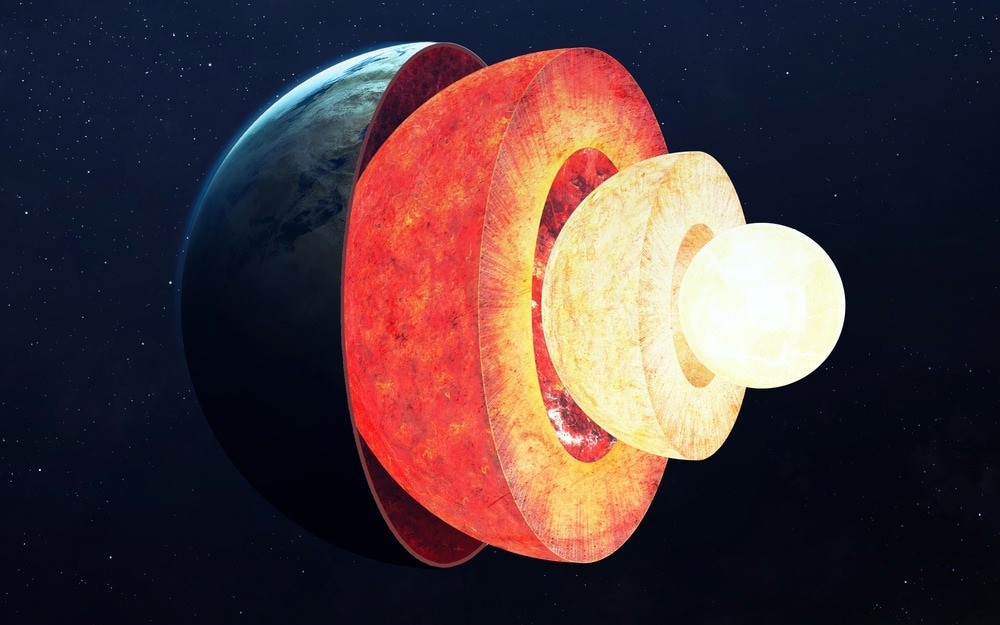New research from Macquarie University clarifies how low-temperature, carbon-rich melts can transport quantities of metals needed in renewable energy systems from deep beneath the Earth’s inner mantle.

Image Credit: Vadim Sadovski/Shutterstock.com
The results published in the journal Science Advances might help with multinational investigations for these essential raw materials.
Small amounts of molten carbonate material were created by an international team under the direction of Dr. Isra Ezad, a postdoctoral research fellow from Macquarie University’s School of Natural Sciences. The experiments were conducted at high pressure and high temperature, simulating conditions found at a depth of about 90 km beneath the Earth’s crust, in the mantle.
Their investigations revealed that carbonate melts can dissolve and transport a variety of critical metals and compounds from nearby rocks into the mantle. This novel discovery will help guide metal prospecting efforts in the future.
We knew that carbonate melts carried rare earth elements, but this research goes further. We show this molten rock containing carbon takes up sulfur in its oxidized form, while also dissolving precious and base metals— ‘green’ metals of the future—extracted from the mantle.
Dr. Isra Ezad, Postdoctoral Research Fellow, School of Natural Sciences, Macquarie University
Similar to the lava that spews from volcanoes, silicates make up most of the rock found deep inside the Earth’s crust and mantle.
Nonetheless, a negligible proportion (a fraction of a percent) of these deep rocks have trace quantities of water and carbon, which leads them to melt at a lower temperature than other mantle regions.
These carbonate melts efficiently dissolve and transfer precious metals like gold and silver, base metals like nickel, copper, and cobalt, and oxidized sulfur, distilling these metals into possible deposits.
Dr. Ezad added, “Our findings suggest carbonate melts enriched in sulfur may be more widespread than previously thought, and can play an important role in concentrating metal deposits.”
Two natural mantle compositions were employed by the researchers: a fertile spinel lherzolite from Cameroon and a mica pyroxenite from western Uganda.
According to Dr. Ezad, thicker sections of continental crust usually develop in older inland parts of continents where they can absorb water and carbon dioxide like a sponge.
“Carbon-sulfur melts appear to dissolve and concentrate these metals within discrete mantle regions, moving them into shallower crustal depths, where dynamic chemical processes can lead to ore deposit formation,” Dr. Ezad.
According to Dr. Ezad, this study suggests that monitoring carbonate melts might help researchers gain a better understanding of the mechanisms involved in the large-scale metal redistribution and ore formation processes over Earth’s history.
Dr. Ezad further added, “As the world transitions away from fossil fuels to battery, wind and solar technology, demand for these essential metals is skyrocketing, and it is becoming harder to find reliable sources. This new data provides us with a mineral exploration space previously not considered for base and precious metals – deposits from carbonate melts.”
The multi-institution team included representatives from the Australian National University in Canberra, the University of Oxford in the UK, the University of Western Australia in Perth, and Macquarie University in Sydney.
Journal Reference:
Ezad, I. S., et. al. (2024) Incipient carbonate melting drives metal and sulfur mobilization in the mantle. Science Advances. doi:10.1126/sciadv.adk5979.
Source: https://www.mq.edu.au/